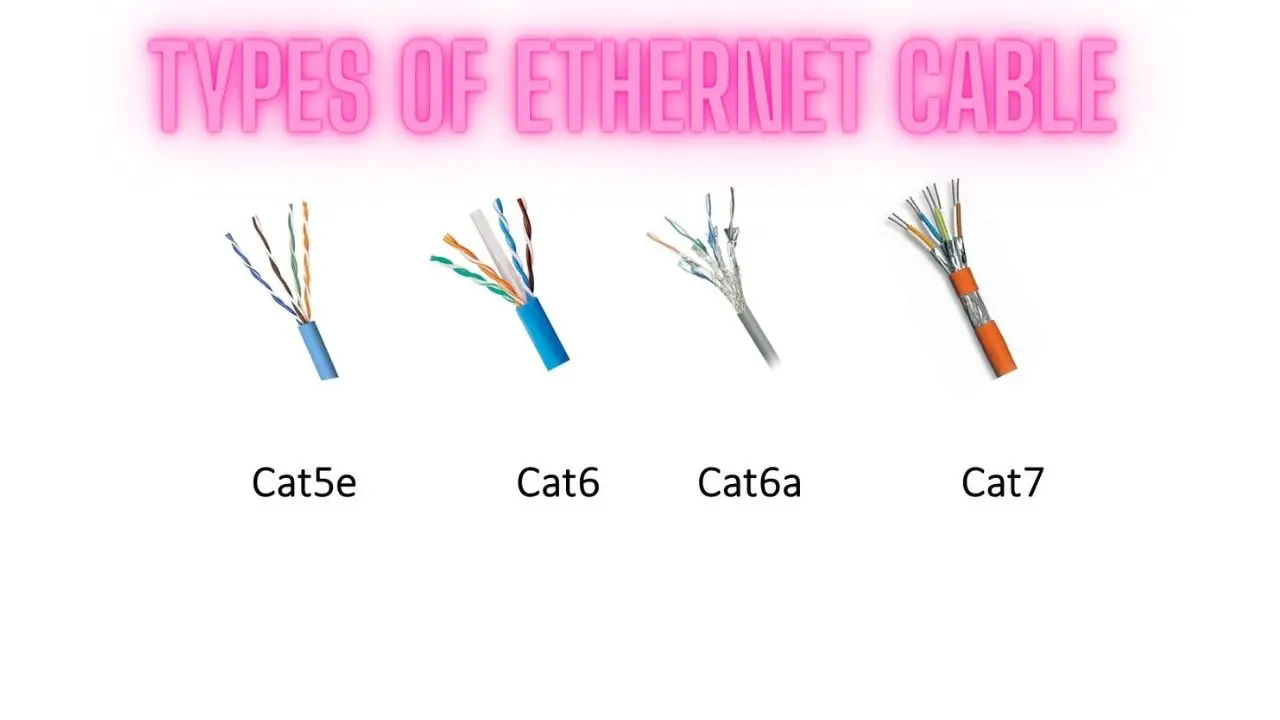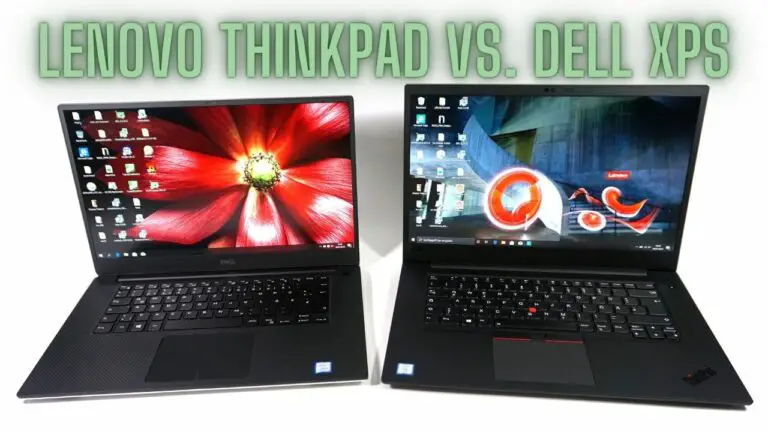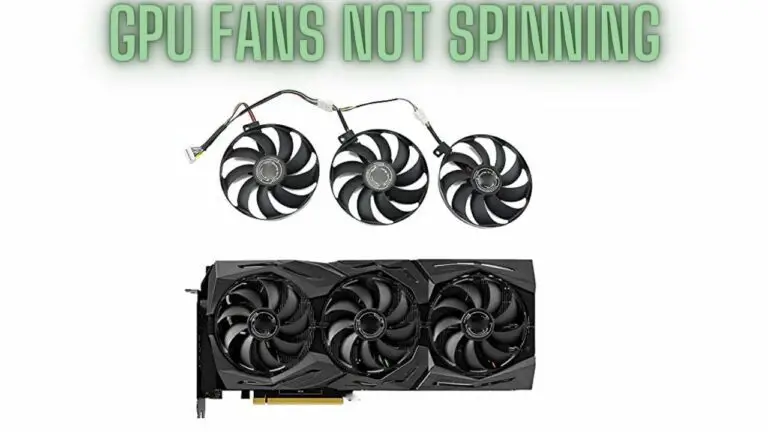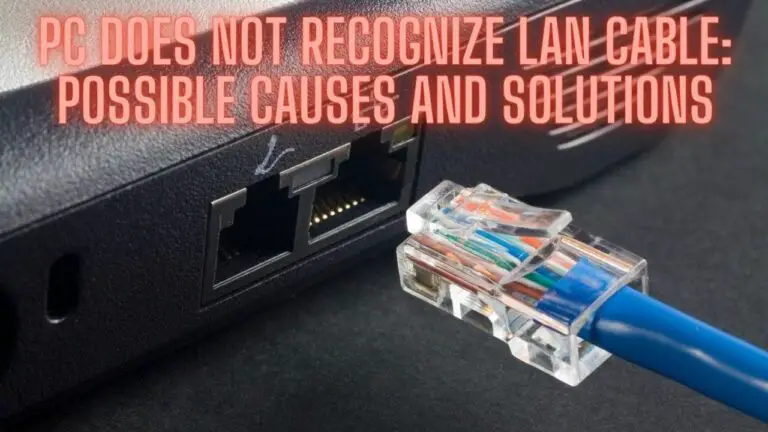Types of Ethernet Cable: Categories of Ethernet Cable
Introduction
Ethernet cables are a fundamental component of modern networking infrastructure, serving as the physical medium for transmitting data between devices in local area networks (LANs) and wide area networks (WANs). These cables play a crucial role in facilitating high-speed, reliable, and secure communication between computers, servers, routers, switches, and other network-enabled devices.
As technology continues to advance and network bandwidth requirements increase, the demand for Ethernet cables that can support higher data transmission rates, greater distances, and more reliable connections has grown. This has led to the development of various types and categories of Ethernet cables, each designed to meet specific performance standards and application requirements.
In this guide, we will explore the different categories and types of Ethernet cables, discuss their characteristics, applications, and use cases, and examine how they contribute to the overall functionality and performance of modern networks. Whether you’re setting up a home network, upgrading your office infrastructure, or deploying a data center, understanding Ethernet cables is essential for building a robust and efficient network environment.
Understanding Ethernet Cables
Ethernet cables, also known as network cables or LAN cables, are physical cables used to connect devices within a network for data transmission. These cables consist of copper or fiber optic strands encased in protective insulation and sheathing. Ethernet cables adhere to standardized specifications and protocols to ensure compatibility and interoperability across different network components.
Here are some key aspects to understand about Ethernet cables:
- Transmission Medium: Ethernet cables can transmit data using either copper wires or fiber optic strands. Copper Ethernet cables are most common and use copper wires to carry electrical signals between devices. Fiber optic Ethernet cables, on the other hand, use glass or plastic fibers to transmit data as light signals, offering higher bandwidth and longer transmission distances.
- Categories: Ethernet cables are categorized based on their performance characteristics and specifications. The most common categories include Cat5e, Cat6, Cat6a, and Cat7. Each category has specific bandwidth, frequency, and transmission characteristics, with higher categories generally supporting higher data rates and longer distances.
- Connectors: Ethernet cables terminate with connectors that plug into Ethernet ports on devices such as computers, routers, switches, and network adapters. The most common connector type for copper Ethernet cables is the RJ45 connector, while fiber optic Ethernet cables use various connector types such as LC, SC, and ST.
- Twisted Pair Configuration: Copper Ethernet cables typically use twisted pair configurations, where pairs of wires are twisted together to minimize electromagnetic interference (EMI) and crosstalk. The twisting pattern helps reduce signal degradation and improves the cable’s ability to transmit data reliably over long distances.
- Shielding: Some Ethernet cables feature shielding to protect against EMI and external interference. Shielded Ethernet cables use a layer of metallic foil or braided wire around the cable’s internal wires to shield them from electromagnetic interference, making them suitable for use in environments with high electrical noise.
- Color Coding: Ethernet cables often follow a standardized color-coding scheme for the internal wires, making it easier to identify and configure connections. In twisted pair Ethernet cables, pairs of wires are typically color-coded with one wire in each pair having a solid color and the other wire having a striped or white color with a corresponding stripe pattern.
Understanding Ethernet cables is essential for designing, implementing, and maintaining network infrastructure. By selecting the appropriate cable type, category, and configuration for your specific application requirements, you can ensure reliable and high-performance data transmission within your network.
Categories of Ethernet Cables
Ethernet cables are categorized based on their performance specifications, which determine their bandwidth, frequency capabilities, and transmission characteristics. The most common categories of Ethernet cables include:
- Category 5e (Cat5e):
- Cat5e cables are designed to support data transmission speeds of up to 1000 Mbps (1 Gigabit per second) over distances of up to 100 meters.
- They feature twisted pair copper wires with improved specifications compared to Cat5 cables, providing better resistance to crosstalk and interference.
- Cat5e cables are suitable for most home and small office network applications and are compatible with both Fast Ethernet (10/100 Mbps) and Gigabit Ethernet (1000 Mbps) standards.
- Category 6 (Cat6):
- Cat6 cables offer higher performance compared to Cat5e cables, supporting data transmission speeds of up to 10 Gbps (10 Gigabits per second) over distances of up to 55 meters.
- They feature tighter twisting of the wire pairs and improved insulation, resulting in reduced crosstalk and better signal integrity.
- Cat6 cables are ideal for high-speed Ethernet applications, such as data centers, enterprise networks, and multimedia streaming, where higher bandwidth and performance are required.
- Category 6a (Cat6a):
- Cat6a cables are an enhanced version of Cat6 cables, offering even higher performance and bandwidth capabilities.
- They support data transmission speeds of up to 10 Gbps over longer distances of up to 100 meters.
- Cat6a cables feature improved shielding and thicker copper conductors, providing better immunity to crosstalk and external interference.
- Cat6a cables are commonly used in environments where high-speed data transmission and reliable performance are critical, such as enterprise networks, data centers, and healthcare facilities.
- Category 7 (Cat7):
- Cat7 cables are designed to support data transmission speeds of up to 10 Gbps over distances of up to 100 meters.
- They feature improved shielding and twisted pair configurations, providing superior performance and resistance to crosstalk and electromagnetic interference.
- Cat7 cables often utilize fully shielded twisted pair (S/FTP) construction, with each pair shielded along with an overall braided shield, further enhancing signal integrity and reducing interference.
- Cat7 cables are less common than Cat5e, Cat6, and Cat6a cables but are suitable for demanding applications that require maximum performance and reliability.
Each category of Ethernet cable offers different performance characteristics, allowing network designers to select the most suitable cable type based on their specific application requirements, budget constraints, and performance expectations.
Types of Ethernet Cables
Ethernet cables come in various types, each designed for specific applications, environments, and performance requirements. The most common types of Ethernet cables include:
- Unshielded Twisted Pair (UTP) Cable:
- UTP cables are the most common type of Ethernet cable and consist of four twisted pairs of copper wires.
- They are widely used in home and office networks for connecting computers, routers, switches, and other network devices.
- UTP cables are available in different categories (such as Cat5e, Cat6, Cat6a) with varying performance specifications and data transmission speeds.
- Shielded Twisted Pair (STP) Cable:
- STP cables feature additional shielding around the twisted pairs of copper wires to provide better protection against electromagnetic interference (EMI) and crosstalk.
- They are commonly used in environments with high levels of electrical noise, such as industrial settings or areas with a lot of electrical equipment.
- STP cables are available in various categories, including Cat6 and Cat6a, offering higher performance and reliability compared to UTP cables in noisy environments.
- Fiber Optic Cable:
- Fiber optic cables use glass or plastic fibers to transmit data as light signals, offering higher bandwidth, longer transmission distances, and immunity to electromagnetic interference.
- They are commonly used in high-speed networks, data centers, telecommunications infrastructure, and long-distance connections.
- Fiber optic cables are available in single-mode and multi-mode variants, each suitable for different transmission distances and bandwidth requirements.
- Plenum Cable:
- Plenum cables are designed for use in plenum spaces, such as the air ducts, ceilings, and walls of commercial buildings.
- They have a special jacket that meets fire safety regulations and emits minimal smoke and toxic fumes in case of fire.
- Plenum cables are available in various categories, including Cat5e, Cat6, and Cat6a, and can be either UTP or STP.
- Direct Burial Cable:
- Direct burial cables are designed for outdoor use and can be buried directly underground without the need for conduit.
- They feature a durable, waterproof jacket that protects the cable from moisture, temperature extremes, and physical damage.
- Direct burial cables are available in various categories and can be either UTP or STP.
- Outdoor Cable:
- Outdoor cables are designed for outdoor use but may require additional protection from moisture, UV radiation, and environmental hazards.
- They are commonly used for outdoor installations, such as connecting buildings, surveillance cameras, and outdoor Wi-Fi access points.
- Outdoor cables are available in various categories and can be either UTP or STP.
Each type of Ethernet cable offers unique characteristics and advantages, allowing network designers to choose the most suitable cable for their specific application requirements and environmental conditions.
Comparison of Ethernet Cable Categories
Comparing different categories of Ethernet cables can help in understanding their performance capabilities and determining which category is best suited for specific networking needs. Here’s a comparison of the most common Ethernet cable categories: Cat5e, Cat6, Cat6a, and Cat7.
- Bandwidth:
- Cat5e: Supports bandwidth up to 100 MHz.
- Cat6: Supports bandwidth up to 250 MHz.
- Cat6a: Supports bandwidth up to 500 MHz.
- Cat7: Supports bandwidth up to 600 MHz.
- Data Transmission Speed:
- Cat5e: Supports data transmission speeds up to 1 Gbps (Gigabit per second).
- Cat6: Supports data transmission speeds up to 10 Gbps over shorter distances (up to 55 meters) and 1 Gbps over longer distances.
- Cat6a: Supports data transmission speeds up to 10 Gbps over the full 100-meter distance.
- Cat7: Supports data transmission speeds up to 10 Gbps over the full 100-meter distance.
- Cable Construction:
- Cat5e: Typically constructed with twisted pairs of copper wires and rated for up to 100 MHz.
- Cat6: Features tighter twisting of wire pairs and improved insulation, providing better performance at higher frequencies.
- Cat6a: Utilizes thicker copper conductors and improved shielding to reduce crosstalk and interference.
- Cat7: Uses additional shielding and twisted pairs with stricter specifications to minimize interference and support higher frequencies.
- Maximum Length:
- Cat5e: Supports cable lengths up to 100 meters (328 feet).
- Cat6: Supports cable lengths up to 100 meters (328 feet).
- Cat6a: Supports cable lengths up to 100 meters (328 feet).
- Cat7: Supports cable lengths up to 100 meters (328 feet).
- Compatibility:
- Cat5e: Backward compatible with older Ethernet standards (such as Cat5) and suitable for most residential and small business networks.
- Cat6: Backward compatible with Cat5e and Cat5 standards and recommended for high-speed data applications in enterprise networks.
- Cat6a: Fully backward compatible with Cat6 and Cat5e standards and suitable for demanding applications requiring higher bandwidth and reliability.
- Cat7: Backward compatible with previous Ethernet standards and designed for future-proofing networks with even higher data transmission speeds and performance requirements.
- Cost:
- Generally, Cat5e cables are the most cost-effective, followed by Cat6, Cat6a, and Cat7 cables, which tend to be progressively more expensive due to their enhanced performance and construction.
Overall, the choice between Cat5e, Cat6, Cat6a, and Cat7 Ethernet cables depends on factors such as required bandwidth, data transmission speed, cable length, environmental conditions, and budget constraints. Upgrading to higher categories may be necessary for applications demanding greater performance and reliability, especially in enterprise environments or high-density network deployments.
Choosing the Right Ethernet Cable
Choosing the right Ethernet cable depends on several factors, including the network’s requirements, performance needs, and budget constraints. Here are some considerations to help you select the appropriate Ethernet cable:
- Bandwidth Requirements:
- Determine the required bandwidth for your network. If you need higher data transmission speeds, consider Cat6a or Cat7 cables, which offer greater bandwidth compared to Cat5e or Cat6 cables.
- Data Transmission Speeds:
- Consider the maximum data transmission speeds required by your network devices. If you need to support 10 Gigabit Ethernet or higher speeds, opt for Cat6a or Cat7 cables.
- Distance:
- Consider the maximum cable length required for your network connections. Ensure that the chosen Ethernet cable category supports the distance between network devices without signal degradation. Cat6a and Cat7 cables support longer distances compared to Cat5e or Cat6 cables.
- Environmental Conditions:
- Evaluate the environmental conditions where the cables will be installed. For harsh environments with high levels of electromagnetic interference (EMI) or temperature extremes, consider shielded cables (STP) or outdoor-rated cables.
- Future-Proofing:
- If you anticipate future upgrades or higher bandwidth requirements, consider investing in higher-category Ethernet cables like Cat6a or Cat7 to future-proof your network infrastructure.
- Budget:
- Consider your budget constraints when choosing Ethernet cables. While higher-category cables offer better performance, they may come at a higher cost. Balance your performance needs with budget considerations.
- Compatibility:
- Ensure compatibility with existing network equipment and standards. While higher-category cables are backward compatible with lower-category standards, ensure that your network devices support the chosen cable category.
- Installation Flexibility:
- Consider the flexibility and installation requirements of the Ethernet cables. Flat Ethernet cables are more flexible and suitable for tight spaces or wall mounting, while round cables may offer better durability and performance in certain applications.
- Certification and Standards:
- Look for Ethernet cables that comply with industry standards and certifications to ensure quality, reliability, and interoperability with other network components.
By considering these factors, you can choose the right Ethernet cable that meets your network’s performance needs, environmental requirements, and budget constraints. It’s essential to plan and design your network infrastructure carefully to ensure optimal performance and reliability.
Applications and Use Cases
The choice of Ethernet cable depends on the specific application and use case. Different environments and network setups may require different types of Ethernet cables to ensure optimal performance and reliability. Here are some common applications and use cases for Ethernet cables:
- Home Networks:
- Ethernet cables are commonly used in home networks to connect computers, gaming consoles, smart TVs, and streaming devices to routers or switches.
- Cat5e or Cat6 cables are often sufficient for typical home networking applications, providing reliable connectivity for internet browsing, streaming, and file sharing.
- Office Networks:
- Ethernet cables are essential for office networks, where multiple computers, printers, and other devices need to be connected to a central network infrastructure.
- Cat6 or Cat6a cables are recommended for office environments to support higher data transmission speeds and provide reliable connectivity for business applications and communication.
- Data Centers:
- Data centers require high-performance Ethernet cables to support the fast and reliable transmission of large volumes of data between servers, switches, and storage systems.
- Cat6a or Cat7 cables are commonly used in data center environments to handle high-speed data transfers and ensure minimal latency for critical applications and services.
- Industrial Settings:
- Ethernet cables are used in industrial settings for connecting automation systems, machinery, sensors, and control devices in manufacturing plants, warehouses, and industrial facilities.
- Industrial-grade Ethernet cables, such as shielded twisted pair (STP) cables, are preferred in these environments to withstand electromagnetic interference (EMI) and harsh operating conditions.
- Surveillance Systems:
- Ethernet cables are used to connect IP cameras, network video recorders (NVRs), and other surveillance equipment in security and surveillance systems.
- Outdoor-rated Ethernet cables are often used for outdoor camera installations, providing weatherproof and durable connectivity for surveillance applications.
- Telecommunications Infrastructure:
- Ethernet cables are used in telecommunications infrastructure for connecting network equipment, such as routers, switches, and modems, in telecommunications networks and service provider networks.
- Fiber optic cables are commonly used for long-distance connections and high-speed data transmission in telecommunications networks.
- Audiovisual (AV) Systems:
- Ethernet cables are used in AV systems for distributing audio, video, and control signals between AV devices, such as video conferencing systems, digital signage displays, and audio amplifiers.
- Cat6 or Cat6a cables with high-bandwidth capabilities are often used in AV installations to support high-definition video and audio signals.
These are just a few examples of the diverse applications and use cases for Ethernet cables across various industries and settings. It’s essential to choose the right type of Ethernet cable based on the specific requirements and performance needs of each application.
Future Trends and Developments
The field of Ethernet cables is continuously evolving to meet the growing demands of modern networking environments. Several trends and developments are shaping the future of Ethernet cables:
- Higher Bandwidth Requirements:
- With the increasing adoption of bandwidth-intensive applications such as 4K and 8K video streaming, virtual reality (VR), augmented reality (AR), and cloud computing, there is a growing demand for Ethernet cables capable of supporting higher bandwidths.
- Future Ethernet cable standards may focus on providing even greater bandwidth capabilities to accommodate these demanding applications.
- Increased Data Transmission Speeds:
- As network speeds continue to increase, Ethernet cables will need to support faster data transmission rates to meet the requirements of next-generation networks.
- There is ongoing research and development in the field of Ethernet cables to push the limits of data transmission speeds, enabling ultra-high-speed connections for applications such as data centers, supercomputing, and high-performance computing (HPC).
- Enhanced Reliability and Performance:
- Future Ethernet cables are expected to offer improved reliability, durability, and performance to meet the stringent requirements of mission-critical applications in industries such as healthcare, finance, and defense.
- Advancements in cable design, materials, and manufacturing processes will contribute to the development of Ethernet cables with higher signal integrity, reduced crosstalk, and better resistance to environmental factors and electromagnetic interference (EMI).
- Power over Ethernet (PoE) Evolution:
- Power over Ethernet (PoE) technology enables the transmission of power and data over a single Ethernet cable, simplifying the deployment of network devices such as IP cameras, wireless access points, and VoIP phones.
- Future Ethernet cables may incorporate advancements in PoE technology to support higher power delivery capabilities, enabling the deployment of more power-hungry devices and IoT (Internet of Things) endpoints.
- Innovations in Fiber Optic Technology:
- Fiber optic Ethernet cables are expected to see continued advancements, with ongoing research into new fiber optic materials, cable designs, and manufacturing techniques.
- Future developments in fiber optic technology may lead to cables with higher data transmission speeds, longer transmission distances, and reduced latency, making them suitable for a wider range of applications, including high-frequency trading, cloud computing, and edge computing.
- Environmental Sustainability:
- There is a growing focus on environmental sustainability in the design and manufacturing of Ethernet cables, with efforts to reduce the environmental impact of cable production, usage, and disposal.
- Future Ethernet cables may incorporate eco-friendly materials, energy-efficient manufacturing processes, and recyclable components to minimize their carbon footprint and support sustainable networking solutions.
These trends and developments are expected to shape the future of Ethernet cables, enabling the creation of faster, more reliable, and more environmentally sustainable networks to meet the evolving needs of the digital world.
Types of Ethernet Cable FAQs
- What are the main types of Ethernet cables?
- The main types of Ethernet cables include Cat5e, Cat6, Cat6a, Cat7, and fiber optic cables.
- What is the difference between Cat5e and Cat6 cables?
- Cat5e cables support data transmission speeds of up to 1 Gbps and are suitable for most residential and small office environments. Cat6 cables offer higher performance and support speeds of up to 10 Gbps, making them ideal for high-speed networking applications.
- What is the advantage of using Cat6a cables over Cat6 cables?
- Cat6a cables offer higher bandwidth and support data transmission speeds of up to 10 Gbps over longer distances (up to 100 meters) compared to Cat6 cables. They also have improved crosstalk and signal integrity performance.
- What is the difference between Cat6a and Cat7 cables?
- Cat6a and Cat7 cables both support data transmission speeds of up to 10 Gbps. However, Cat7 cables have additional shielding and stricter specifications for crosstalk and interference, making them more suitable for demanding applications in data centers and industrial environments.
- When should I use fiber optic cables instead of copper Ethernet cables?
- Fiber optic cables are preferred for long-distance connections, high-speed networking, and environments with high electromagnetic interference (EMI). They offer greater bandwidth, longer transmission distances, and better immunity to EMI compared to copper Ethernet cables.
- What are the advantages of fiber optic cables over copper Ethernet cables?
- Fiber optic cables offer higher bandwidth, longer transmission distances, and better resistance to EMI compared to copper Ethernet cables. They are also immune to electrical interference and provide greater security against eavesdropping.
- Can I use Cat6 cables instead of Cat5e for my home network?
- Yes, you can use Cat6 cables for your home network if you require higher data transmission speeds and future-proofing. While Cat5e cables are sufficient for most residential applications, Cat6 cables offer better performance and support higher speeds.
- What factors should I consider when choosing an Ethernet cable for my network?
- Factors to consider include data transmission speeds, distance requirements, environmental conditions, budget constraints, and compatibility with existing network equipment.
- Are there different types of connectors for Ethernet cables?
- Yes, Ethernet cables use different types of connectors, such as RJ45 connectors for twisted pair copper cables and LC, SC, or ST connectors for fiber optic cables. The choice of connector depends on the type of cable and the network equipment being used.
- What is the future of Ethernet cables?
- The future of Ethernet cables involves advancements in speed, performance, and efficiency to support the growing demand for high-speed data transmission, cloud computing, IoT, and emerging technologies such as 5G and Wi-Fi 6. Continued research and development will lead to the introduction of new Ethernet cable standards and technologies to meet the evolving needs of modern networks.
Conclusion
In conclusion, Ethernet cables play a crucial role in modern networking infrastructure, providing the physical connectivity that enables data transmission between devices in local area networks (LANs), data centers, telecommunications networks, and more. Throughout this guide, we’ve explored the various types, categories, and applications of Ethernet cables, as well as future trends and developments shaping the evolution of Ethernet technology.
From the early days of twisted pair copper cables to the advent of high-speed fiber optic cables, Ethernet technology has evolved significantly to meet the increasing demands of data-intensive applications and emerging network architectures. Today, Ethernet cables are available in a variety of categories, including Cat5e, Cat6, Cat6a, Cat7, and fiber optic cables, each offering different levels of performance, bandwidth, and reliability to suit diverse networking requirements.
As networks continue to evolve and expand, Ethernet cables are expected to undergo further advancements to support higher data transmission speeds, increased bandwidth requirements, and enhanced reliability. Future Ethernet cables may incorporate innovations in materials, design, and manufacturing processes to deliver faster, more reliable, and more environmentally sustainable networking solutions.
In the face of these developments, network administrators, IT professionals, and industry stakeholders need to stay informed about the latest trends and technologies in Ethernet cables to make informed decisions when designing, deploying, and maintaining network infrastructure.
Overall, Ethernet cables will remain a critical component of networking infrastructure for the foreseeable future, enabling the seamless transmission of data and supporting the digital connectivity needs of businesses, organizations, and individuals worldwide.







